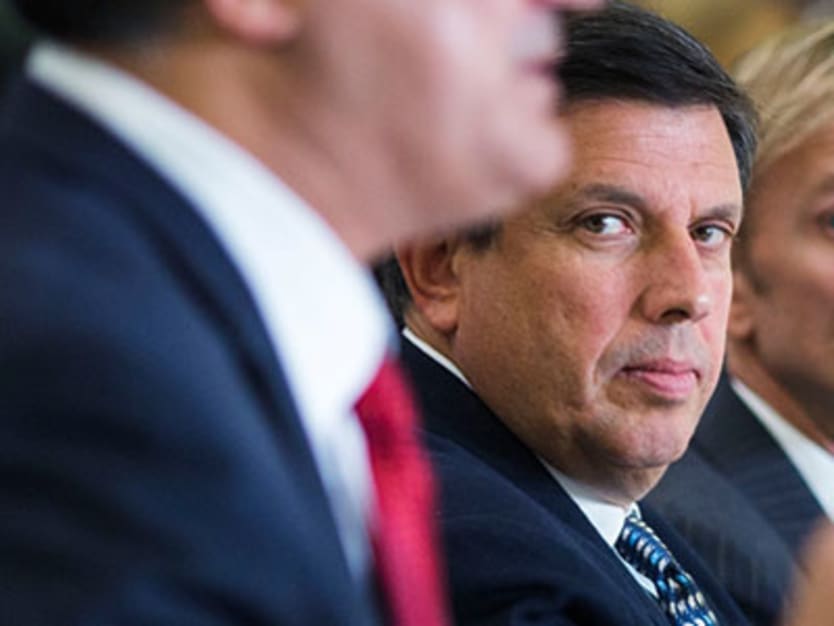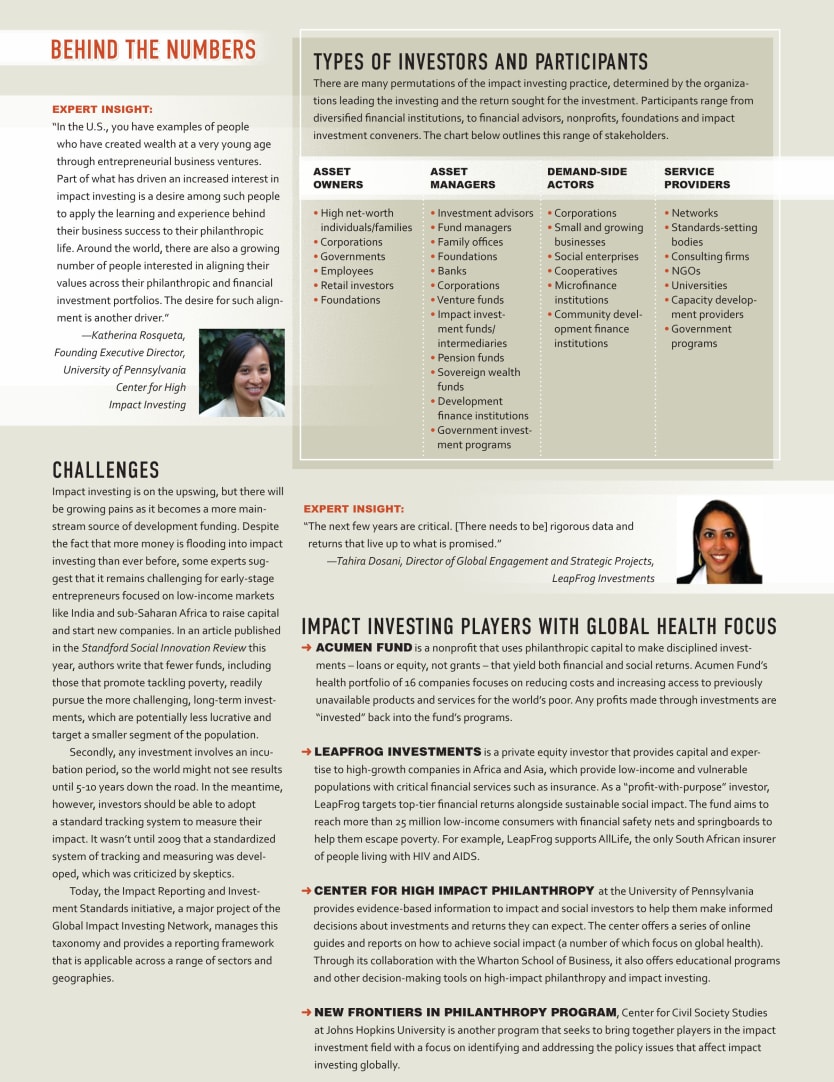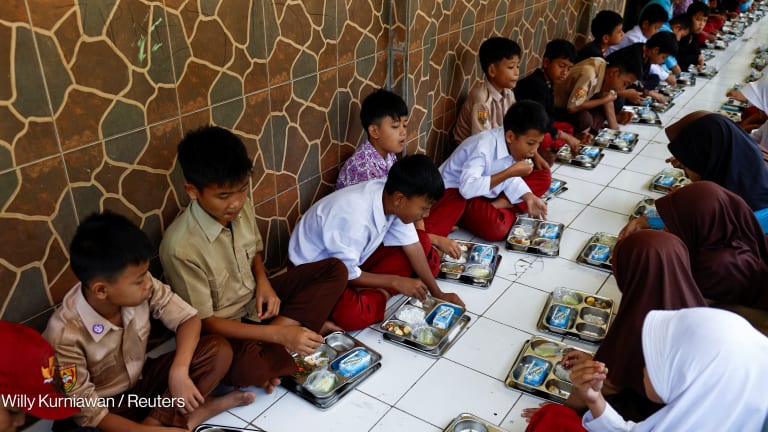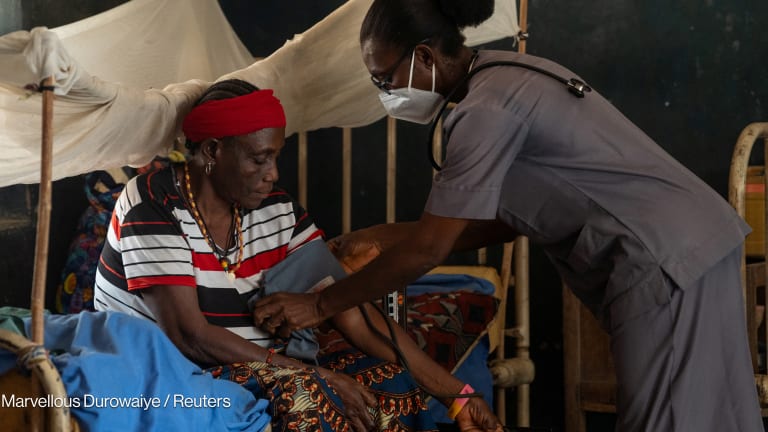
Few global health institutions focus as much on innovative finance as UNITAID. The global health initiative, established in 2006 and hosted by the World Health Organization in Geneva, uses its understanding of how to address market shortcomings to improve access to quality-assured treatment and diagnostics for HIV and AIDS, tuberculosis and malaria patients in low-income countries. What can the global health community learn from UNITAID’s example? Devex Editor Rolf Rosenkranz asks Executive Director Denis Broun.
Why will traditional donor funds alone not be able to tackle the big global health challenges of our time?
Countries’ capacity to address their own needs has increased remarkably over the past 10 years thanks to economic growth. Look at the way Nigeria is handling polio eradication these days: It’s completely different from how it was done a decade ago. So it could be argued that traditional types of donations are less needed. But we know that international mechanisms such the Global Fund or UNITAID have a significant impact on global public health issues, and provide sound additional funding options to bilateral routes.
There is still very much a need for funding from Western countries, but as we know, the Office of Development Assistance remains under threat from economic issues. There are some remarkable exceptions, like the U.K., but on the whole, external aid budgets are decreasing and there is a need to find other types of resources. We must continue to be ever more creative in how we both source funding and make sure those funds are spent to best effect.
What innovative solutions for global health financing do you find the most promising?
Innovative financing has been successfully applied to global health for some time now. In the 1990s, for instance, initiatives for the highly indebted African countries turned that debt into money for education and health. And more recently, UNITAID has had great success with the air ticket levy, where a minute contribution is added to air ticket purchases. In January, France announced that it has now raised 1 billion euros (estimated $1.3 billion) since it set up its air ticket levy initiative in 2006, the vast majority for global public health, and, importantly, with the French airline and tourist industry reporting absolutely no negative impact on business. A proven win-win for all. The idea of financial transaction tax is also promising, as it could generate large amounts for development. These are relatively simple and efficient to administer and a promising funding source.
We also see a push for universal health coverage. Funds generated using insurance mechanisms in the countries themselves is emerging as probably the most viable financing solution over the long term for such health coverage schemes.
How do you see the global health community’s role changing in all of this?
I think it has a much bigger role than before. The architecture of the health community is no longer top-down coming from the WHO. Civil society, foundations, the private sector and others are playing an increasingly crucial role. We’re seeing a much more diverse health community with highly trained and competent people. We must ensure that we get the best possible coordination of all these people on the ground.
For this coordination, nothing can replace the national government. The good news is that their level of commitment and involvement has increased a lot. We’re seeing ministers of finance and presidents now talking about health, ready to act. And if you look at results, you have to recognize that what has been achieved in the past 20 years has been more than what has been achieved in the fight against diseases since the beginning of humanity.
What are the barriers to expanding innovative financing for global health, for getting everyone to the table?
When you get money coming through new means – through levies on financial transactions, for instance – that is innovative financing. With the introduction of such new initiatives, you have a whole set of economic operators who need to buy into the concept. Convincing them takes a lot of negotiation and time, but becomes easier with increasing evidence that such initiatives are usually win-win decisions.
Co-financing has become increasingly popular in development cooperation. How do you see this trend change global health?
It’s already there, to a large extent. If you have more and more operators, you are going to see more and more co-financing of projects. Look at the big initiatives on maternal mortality, for instance, or the Affordable Medicines Facility, which is managed by the Global Fund: These are co-financed by companies and by foundations. When you have a good idea, then often you have other people who have thought about it and are ready to help you put it in place. Co-financing is a way to do it.
South-South cooperation has been increasing. What lessons can we learn from it?
For UNITAID, this has two dimensions. First, there’s the financing, because 85 percent of our money goes to projects to benefit the poorest, and it’s a matter of financial solidarity; we have several African countries, for instance, contributing to UNITAID because they know when we finance an initiative, it is going to reach the poor.
We also want to make sure that manufacturers remain active in the South and are supported by innovators. One of the best pharmaceutical plants in Africa is in Uganda, and is the result of an Indian investment. It’s a typical South-South technology transfer.
We see technology transfer and support as a big priority going forward. It’s not just about looking at what’s available in rich countries and how that can trickle down and be adapted for poor countries. We are going to see more and more initiatives and innovations coming from the South and for the people of the South. We’re doing that right now, for instance, by supporting point-of-care diagnostics for HIV, which means being able to monitor disease for patients at an extremely low cost. This is a completely innovative technology and we know that once it has been used in countries across Africa, it makes economic sense for this to be also used in rich countries.

Click the image to view in large size.
Often, it’s not just about innovative financing – obstacles of entering markets, for instance, can also affect the quality and availability of health care and, ultimately, curtail economic and job growth.
What we have to do is not only get more money, but continue to find the best possible ways of spending it. The mechanisms have to be there, the systems, the supply chain management, the capacity, the regulatory framework, the training – all these things work together. We have to ensure that all aspects of markets and operations work as smoothly as possible. That’s why everybody’s work must be coordinated, including that of government. Otherwise, efforts are going to fail.
Some things change faster than others. Often, you may have solved access-to-care challenges, but then you have patent issues, or you have to negotiate licenses, or you have problems with the distribution system. We are faced with problems of intellectual property, for instance; this is why we have set up what is called the Medicines Patent Pool to help arrange voluntary licenses for HIV drugs, as patents can block access. You may have problems registering in the right places; a country may say that in order to register, you’ll need to repeat steps you’ve already completed elsewhere. We have to take care of this at the same time as we’re looking for funding.
Do the institutions and structures to work together on these issues exist, or is there a need for a new global health architecture?
When we speak of architecture, we suppose that there’s an architect. But most of the time, there is no real preconceived design; people see what is going on and find ways to make it work as best as possible. What is most important is that those who are engaged aren’t trying to do things that they are unable to do. And for that, it’s essential that there’s coherence at the country level and that the ministries and local authorities are in charge. And we have to understand that in some countries, government may not have the capacity, and that’s where we can help, too.
Is there a need for new types of organizations? I don’t think so. We have the people and organizations, now we may need to expand their scope a bit or refocus some of the things they do.
How do you want global health and the idea of innovative finance to be integrated in the post-2015 global development agenda?
Discussions are ongoing, but I think it would be good to have new global development goals, because we’ve seen how the Millennium Development Goals have brought people together to reach common targets.
What’s important is that we don’t wake up on January 1, 2016, and think that we have to change and start from scratch. We are not going to stop funding the treatment of people with HIV; it’s impossible! You’re not going to say that malaria is over. So, however the goals will be worded, it is absolutely clear that we have to continue the things we’re doing well, so that the results continue to come in.
Find out more about the ”Report on Global Giving: A New Era of Philanthropy and Investment in Global Health” by PSI in partnership with Devex and support by Fenton Communications, and sign up to receive PSI’s Impact magazine. Subscribe to The Development Newswire to receive top international development headlines from the world’s leading donors, news sources and opinion leaders — emailed to you FREE every business day.








